
Zork is a text adventure game first released in 1977 by developers Tim Anderson, Marc Blank, Bruce Daniels, and Dave Lebling for the PDP-10 mainframe computer. The original developers and others, as the company Infocom, expanded and split the game into three titles—Zork I: The Great Underground Empire, Zork II: The Wizard of Frobozz, and Zork III: The Dungeon Master—which were released commercially for a range of personal computers beginning in 1980. In Zork, the player explores the abandoned Great Underground Empire in search of treasure. The player moves between the game's hundreds of locations and interacts with objects by typing commands in natural language that the game interprets. The program acts as a narrator, describing the player's location and the results of the player's commands. It has been described as the most famous piece of interactive fiction.

The Atari 8-bit computers, formally launched as the Atari Home Computer System, are a series of home computers introduced by Atari, Inc., in 1979 with the Atari 400 and Atari 800. The architecture is designed around the 8-bit MOS Technology 6502 CPU and three custom coprocessors which provide support for sprites, smooth multidirectional scrolling, four channels of audio, and other features. The graphics and sound are more advanced than most of its contemporaries, and video games are a key part of the software library. The 1980 first-person space combat simulator Star Raiders is considered the platform's killer app.

Star Raiders is a space combat simulator video game created by Doug Neubauer and published in 1980 by Atari, Inc. Originally released for the Atari 400/800 computers, Star Raiders was later ported to the Atari 2600, Atari 5200, and Atari ST. The player assumes the role of a starship fighter pilot, who must protect starbases from invading forces called Zylons. Piloting and combat are shown in the 3D cockpit view, while a 2D galactic map shows the state of the Zylon invasion. Neubauer made the game in his spare time at Atari, inspired by contemporary media such as Battlestar Galactica and Star Wars, as well as the 1971 mainframe game Star Trek.
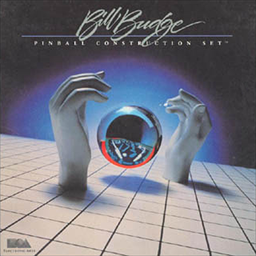
Pinball Construction Set is a video game by Bill Budge written for the Apple II. It was originally published in 1982 through Budge's own company, BudgeCo, then was released by Electronic Arts in 1983 along with ports to the Atari 8-bit computers and Commodore 64.

M.U.L.E. is a multiplayer video game written for Atari 8-bit computers by Ozark Softscape. Designer Danielle Bunten Berry takes advantage of the four joystick ports of the Atari 400 and 800 to allow four-player simultaneous play. Published in 1983, M.U.L.E. was one of the first five games from new company Electronic Arts, alongside Axis Assassin, Archon: The Light and the Dark, Worms?, and Hard Hat Mack. It is primarily a turn-based strategy game, but incorporates real-time elements where players compete directly as well as aspects that simulate economics.
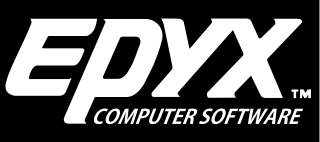
Epyx, Inc. was a video game developer and video game publisher active in the late 1970s and 1980s. The company was founded as Automated Simulations by Jim Connelley and Jon Freeman, originally using Epyx as a brand name for action-oriented games before renaming the company to match in 1983. Epyx published a long series of games through the 1980s. The company is currently owned by Bridgestone Multimedia Group Global.

Choplifter is a military themed scrolling shooter developed by Dan Gorlin for the Apple II and published by Broderbund in 1982. It was ported to Atari 8-bit computers the same year and also to the VIC-20, Commodore 64, Atari 5200, ColecoVision, MSX, and Thomson computers.

Temple of Apshai is a dungeon crawl role-playing video game developed and published by Automated Simulations in 1979. Originating on the TRS-80 and Commodore PET, it was followed by several updated versions for other computers between 1980 and 1986.

Compute!, often stylized as COMPUTE!, was an American home computer magazine that was published from 1979 to 1994. Its origins can be traced to 1978 in Len Lindsay's PET Gazette, one of the first magazines for the Commodore PET computer. In its 1980s heyday, Compute! covered all major platforms, and several single-platform spinoffs of the magazine were launched. The most successful of these was Compute!'s Gazette, which catered to VIC-20 and Commodore 64 computer users.
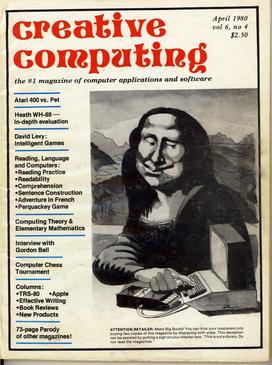
Creative Computing was one of the earliest magazines covering the microcomputer revolution. Published from October 1974 until December 1985, the magazine covered the spectrum of hobbyist/home/personal computing in a more accessible format than the rather technically oriented Byte.
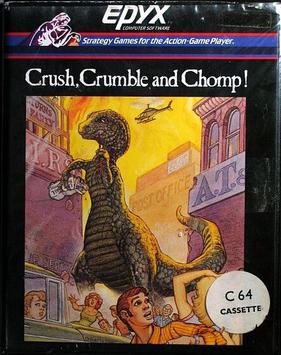
Crush, Crumble and Chomp! is a video game where the player takes control of a movie monster and attacks a major city, such as New York or San Francisco. It was published in 1981 for the TRS-80, Apple II, and Atari 8-bit computers. Ports to the VIC-20, Commodore 64, and IBM PC compatibles were released later. Some versions were published under the company's original name of Automated Simulations, while the rest use Epyx.
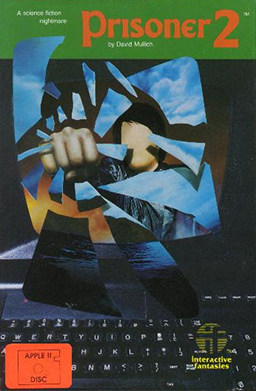
The Prisoner 2 is a video game published in 1982 by Edu-Ware. It is a remake of the 1980 game The Prisoner.

Many games, utilities, and educational programs were available for Atari 8-bit computers. Atari, Inc. was primarily the publisher following the launch of the Atari 400/800 in 1979, then increasingly by third parties. Atari also distributed "user written" software through the Atari Program Exchange from 1981 to 1984. After APX folded, many titles were picked up by Antic Software.

Legionnaire is a computer wargame for Atari 8-bit computers created by Chris Crawford released through Avalon Hill in 1982. Recreating Julius Caesar's campaigns in a semi-historical setting, the player takes command of the Roman legions in real-time battles against the barbarians.
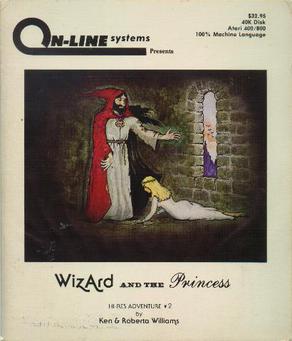
Wizard and the Princess is a graphic adventure game written for the Apple II and published in 1980 by On-Line Systems. It is the second installment in the Hi-Res Adventures series after Mystery House. Unlike its predecessor, which featured monochrome drawings, Wizard and the Princess introduced color graphics. Ports for the Atari 8-bit computers and Commodore 64 were released in 1982 and 1984 respectively. The 1982 self-booting disk version for IBM PC compatibles was renamed Adventure in Serenia.
Dunjonquest is a series of single-player, single-character fantasy computer role-playing games by Automated Simulations. Temple of Apshai was the most successful and most widely ported game in the series. The games relied on strategy and pen & paper RPG style rules and statistics.

Transylvania is an adventure video game published by Penguin Software. It was released for the Apple II in 1982 followed by ports to the Atari 8-bit computers and Commodore 64. A Mac conversion was published in 1984, then versions for the Amiga, Atari ST, and MS-DOS in 1985.
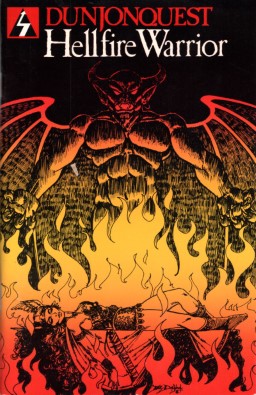
Hellfire Warrior is a dungeon crawl video game for the Apple II, Commodore PET, and TRS-80 published by Automated Simulations in 1980. A port to Atari 8-bit computers was released in 1982. Hellfire Warrior is the direct sequel to 1979's Temple of Apshai. Two expansion packs were published.

Adventure in Time is a text adventure written by Paul Berker for the Apple II. It was published in 1981 by Phoenix Software, followed by a version for Atari 8-bit computers in 1983.


















